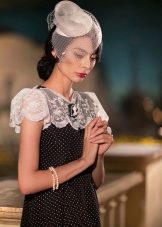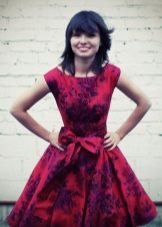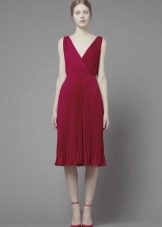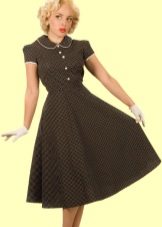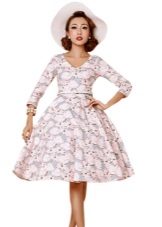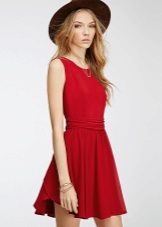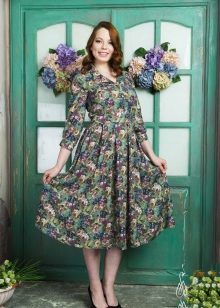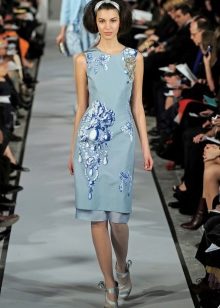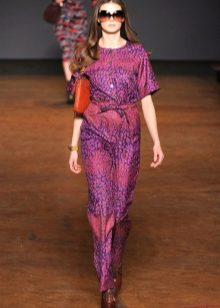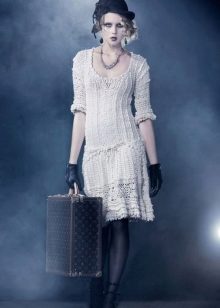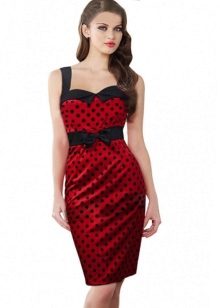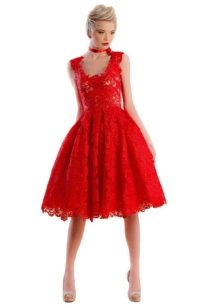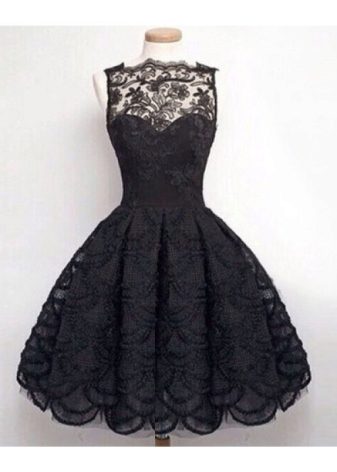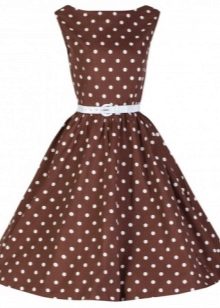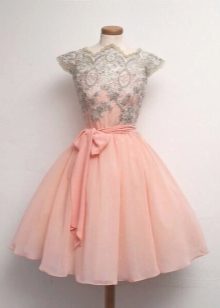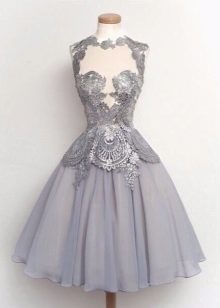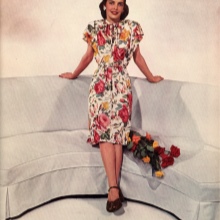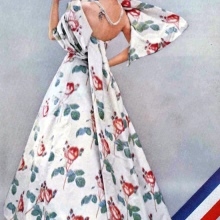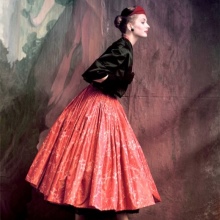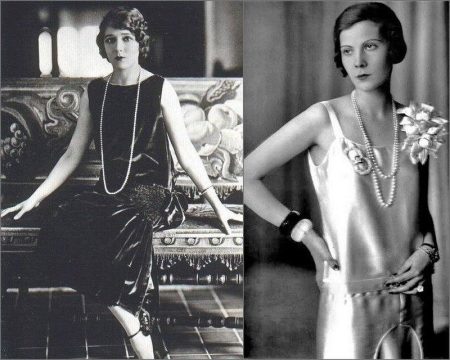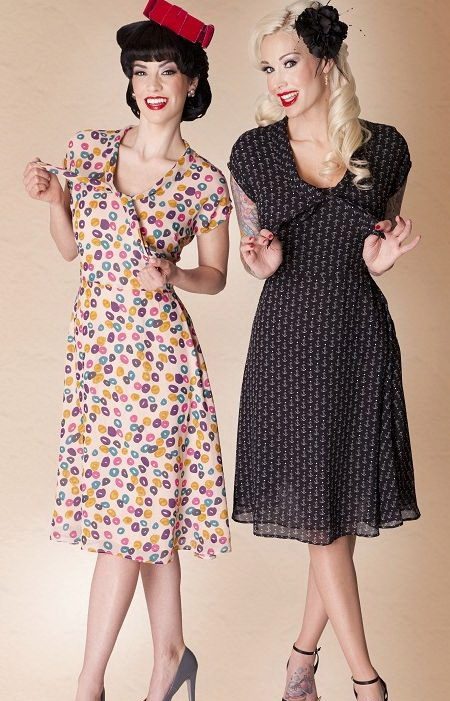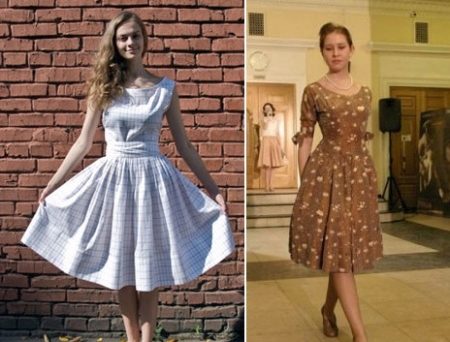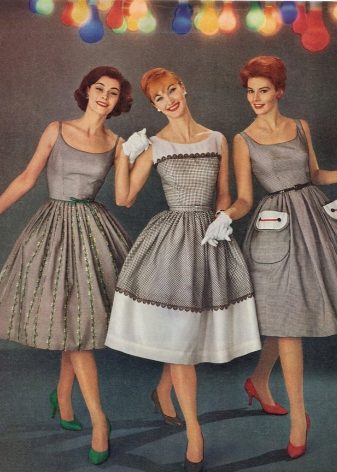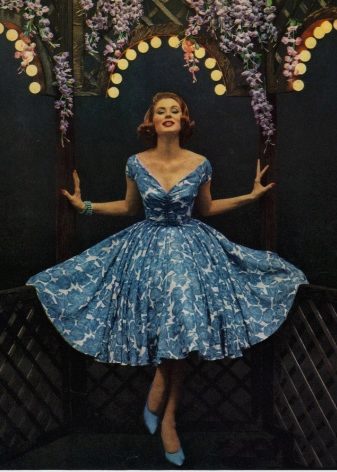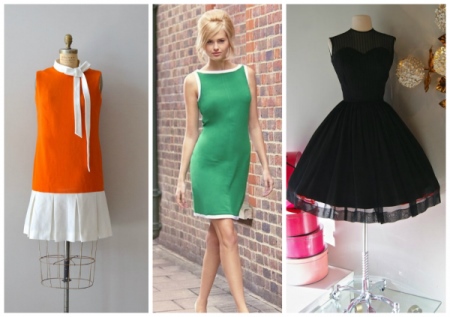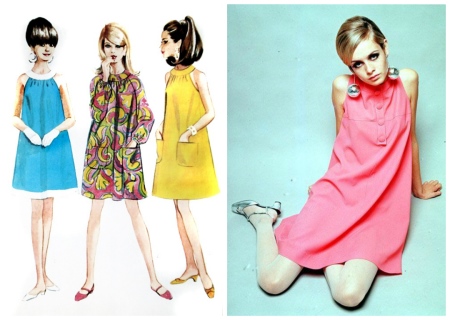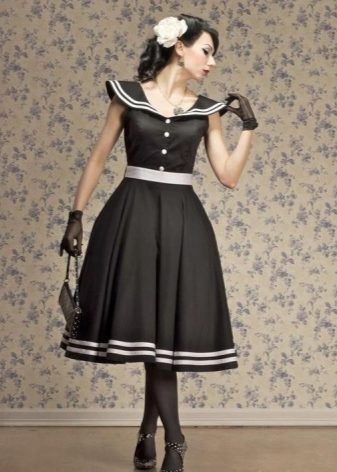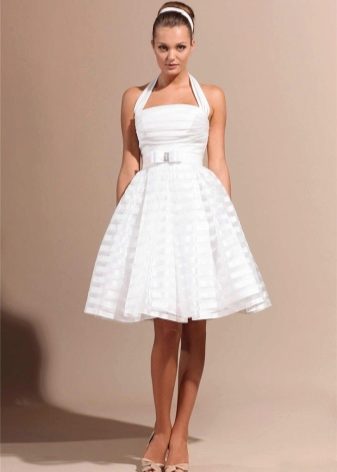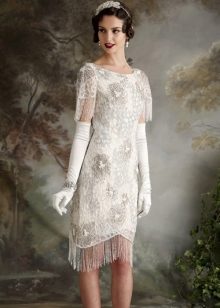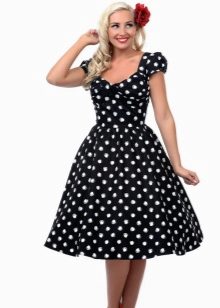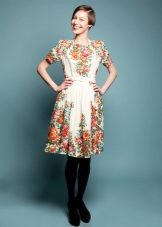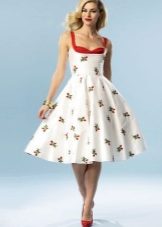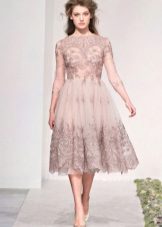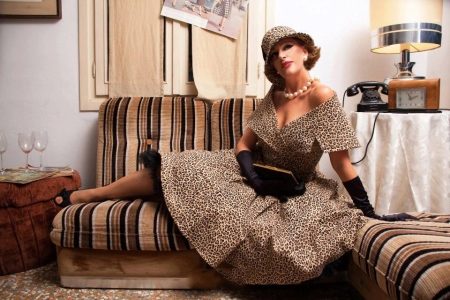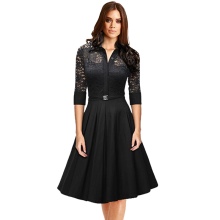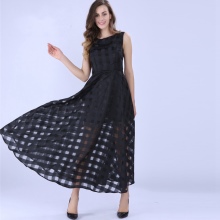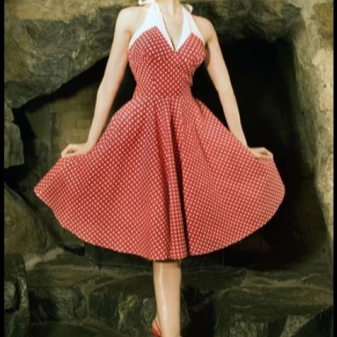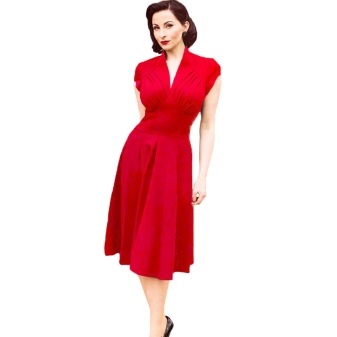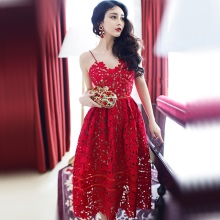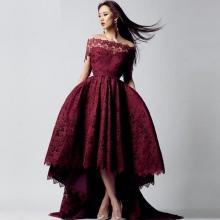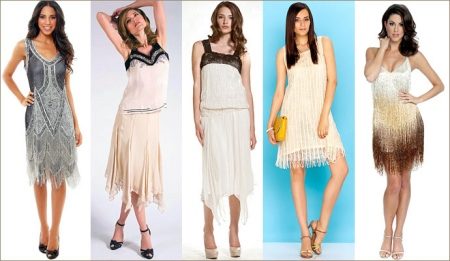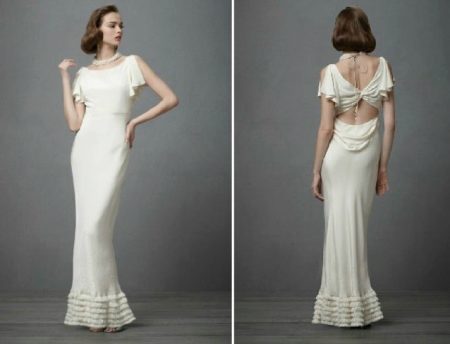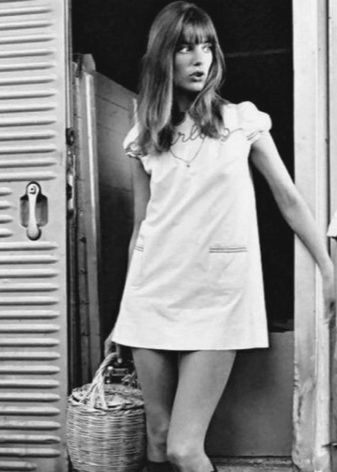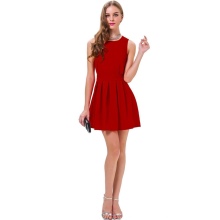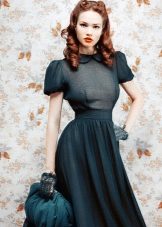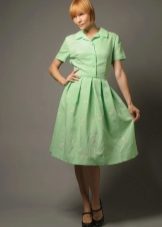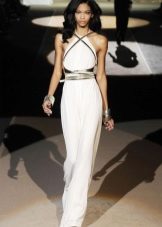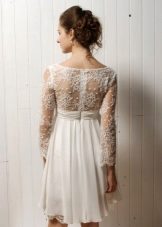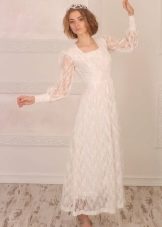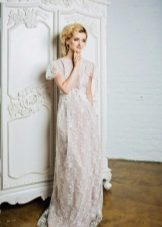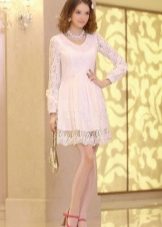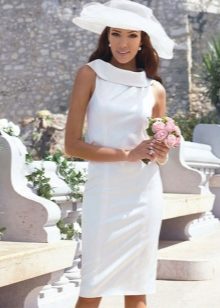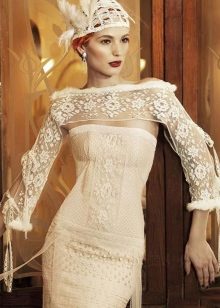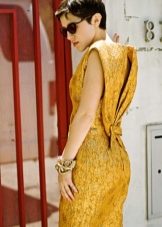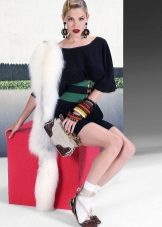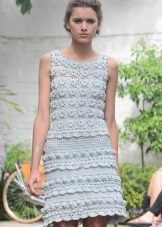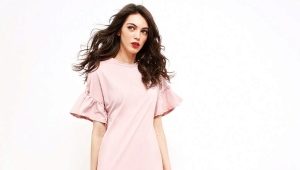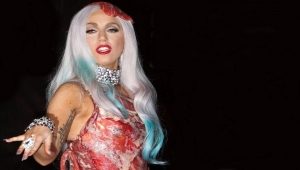Vintage Dresses
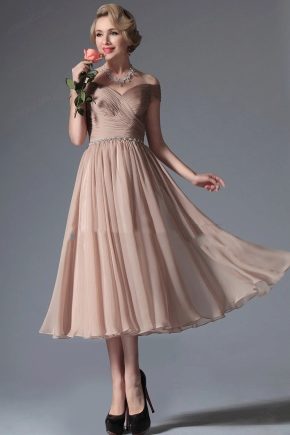
Vintage can be called the elements of clothing that were fashionable in the last century. Since fashion is cyclical, demand for outfits slightly forgotten over the century begins to periodically remind of itself. This season, you can safely get from old chests grandmothers and great-grandmother feminine outfits. What for? At the peak of popularity are vintage dresses that are able to highlight the beauty of the silhouette of a modern woman.
What is vintage style
The concept of “vintage style in clothes” appeared only in the 90s, when women of fashion began to actively wear things sewn in the 60s – 70s. It is interesting that only outfits created since the 1940s fell under this concept. In modern times, it is customary to call vintage clothing that is sewn in the 20s – 80s of the last century, but not earlier and not later. But this does not mean that designers have to rummage through old cabinets to find a suitable model for their collections. Today there are several options for vintage:
- Classic vintage - real designer clothes that were worn in the last century, but not later than the 80s of the last century.
- Stylized vintage - clothing in the style of the last century, which was deliberately aged, and was created already in the modern period.
- Neovintage - clothes that are deliberately aged, giving features of the style of the last century, but it can be created anytime.
- Vintage combination - clothes created by modern designers in modern style, but decorated with vintage elements - old buttons, brooches and so on.
Modern designers are so resourceful that they manage to sew absolutely new and modern things from old fabrics. Finding them now is not so easy, but if they succeed, then the collections have an extraordinary success, receiving high marks from both critics and current fashionistas.
Popular models
But if we are talking about popular models of dresses, then their features have changed over the decades. The style and preferences of the then young ladies were influenced by movie stars, the standard of living and the overall political situation. Consider fashionable features that have already become vintage in more detail.
20s - 30s
During this period, the girls sought to resemble the famous Hollywood actresses, one of whom was Marlene Dietrich. On weekdays, they wore cropped dresses like tunics that complemented the stylish belt. They were mostly sewn from knitwear. Festive and evening dresses were sewn of velvet, silk and were an elongated robe of straight or slightly flared cut, which effectively exposes a part of the ankles. The sleeves were long or missing, and the neckline was closed.
In those days, girls were slim and even noticeably thin, so young ladies who want to wear such a dress nowadays have a better type of body.
40s
The image of girls in this period was influenced by the terrible events of the Second World War. It was a period of great change, which erased subtle and seductive lines from the girls' dresses. The outfits became strict, to some extent even rude, and more like military uniforms. But in some models of dresses still traced notes of femininity. For the casual look, they preferred to choose dresses with flared skirts up to the middle of the calf, and for the evening look they chose dresses without straps.
During this period, the girls still differed by thinness, therefore, modern girls, who would prefer to wear a dress in the style of the 40s, better be distinguished by an enviable silhouette in the form of an hourglass.
50s
By this time, people had already begun to gradually recover from the horrors of war, and outfits that emphasize the woman’s sexuality and brightness were particularly honored. The fluffy and multi-layered skirts of dresses reached the knee, and the waist was necessarily tied up with a wide satin ribbon, making the silhouette even more sophisticated. Dresses during this period were distinguished by an interesting line of neckline. It was not too open, but it created a kind of mystery. If there were sleeves, then small ones, more preference was given to the straps.
Dress in this style will suit young ladies with any type of figure, but it is worth considering that a girl who wants to wear it should have confidence and be relaxed. Slender legs, slim waist and big breasts will be an additional advantage.
60s - years
During this period, fashion society sought to stand out from the crowd. Hippie style was in high esteem - free and bright. The dresses of those years were distinguished by a trapezoidal cut and knee-length. The skirt often had a pleated look, and sometimes was made multi-layered. The neckline could be closed or have a V-shape, but the sleeves were shortened, and sometimes they were completely absent, since more preference was given to the straps.
From this point on, the girls' figures did not have a mass monotony. That is why any modern person will be able to find a suitable model of the dress in this style.
70s - years
During this period, disco style reigned in a fashionable society. Brightness of shades and a variety of patterns became fashionable more than ever. After a long and unjustified oblivion, the length of the maxi again became trend. Midi and mini dresses were also present in a huge assortment. The cut became straightforward and was distinguished by its decorative simplicity, but it was possible to find dresses with a flared skirt.
In dresses in the 70s style any girl can look bright. Models of that time are varied and more and more begin to look like modern ones. Fashion for a high waist and boyish silhouette dresses we owe it to this period.
80s
During this period, the ideal was the silhouette of the “hourglass”, so the designers actively sought to give absolutely all the girls this form with the help of dresses. Particular attention was paid to the lines of the shoulders, waist and hips. Corrective elements of drapery, ruffles, frills and shoulder pads came into fashion, and the cut acquired more and more seductive forms. Evening collections of 80s can be found even in modern collections, and absolutely every young lady, without exception, can choose the right model.
Colors and prints
Fashion for shades and patterns of dresses changed as spontaneously as for styles: In 20 years, ladies preferred to wear dresses in pastel shades, as well as classic shades - blue and white. Especially popular was considered a floral print. In the 30s, trend patterns in the form of strips, cages, peas and flowers became trendy. In the daily manner, preference was given to white color, and in the evening - gold and silver.
Starting from the 40s, laconic vertical stripes, geometric patterns and furs became fashionable. Women began to wear dresses of strict and reserved shades - dark green, gray, cream and burgundy. At 50, the checkered, zigzag and floral print was again in demand, and, in most cases, preference was given to white.
In the 60s – 70s, the image of girls began to bring much more brightness and color. Not only floral, but also animal prints have become fashionable. Especially the trend was considered leopard. Among the popular shades - lemon, blue, brown, and purple.
In the 80s, yellow shades became the most trending, as well as lime, pink and green. Fashion prints remained the same.But there are shades that were relevant in all the above times and remain so today.
The black
The color of the classics, which has been especially loved by women always. This color gave charm and sophistication to the evening image and created a strict and concise look in everyday life. The dress of this color looked favorably any patterns and decorative elements, whether it be rhinestones, beads or feathers. Under it did not have long to pick up other elements of the wardrobe - classic shoes, a cape or a boa and the image is ready.
Red
The fatal color has many shades, each of which took place at one time or another. In the stormy 20-30 years, preference was given to an appetizing cherry shade, in the military 40th - burgundy, and in the postwar 50th - titian. In 60 - 80 years began to give preference to the brighter shades of red - scarlet, crimson, carrot, red-orange.
Length
But the attitude to the length of designers and fashionistas has always been ambiguous. At the age of 20, light dresses with length up to the middle of the calf came into fashion, and they were worn both in the evening look and in everyday wear. The same length was popular in the military 40s, but the dresses were strict and more reminiscent of men's uniforms. Such a length remained in the 50s, but the outfits became brighter, and their skirts were notable for their strong flare. Since the beginning of the '60s, midi outfits have been a little forgotten and they returned to fashion only in the 80s, and then only in the office style.
Long
This dress came into vogue in the 30s. Then it reached the ankles, and a small ruff was sewn to the bottom of the slat, forming a semblance of the “fish” silhouette. Sometimes these dresses had a small train, but they were worn exclusively in the evening image. In the daytime, they preferred lighter, flowing styles.
A short
Such dresses became a real breakthrough, a fashionable revolution that occurred in the 60s. Mini skirt dresses barely reached mid-thigh, but were considered extremely fashionable and beautiful. They were worn by absolutely everything and it’s good that they are delicious, but the correct forms of silhouette, the girls were allowed to. Regarding the cut of dresses, in most cases it had a trapezoidal shape.
To the knee
In the 70s the world has already slightly moved away from the rush of mini-skirts. Girls began to choose more restrained clothes to the knee. Dresses had a straight silhouette, sometimes flared. Skirts were light pleating, but could be straight. In the 80s, young fashionable women allowed themselves to wear such pleated skirts, but shorter in length.
Fabrics and textures
For sewing women's dresses at different times used different fabrics. In the 1920s, flowing silk and chiffon dresses were considered especially popular. In the 30s, coarser taffeta, as well as light cotton, took the palm. In the military in the 40s, crepe became the most popular, and at the end of the 50s dresses were made from satin fabric, adding a silk lining. There were also unique dresses made of tulle and organza.
By the beginning of the 60 's, light silk and satin dresses began to be decorated with sequins and beads. In the 70s, dresses in most cases became cotton and knitted. They were decorated with elements of drapery, ruffles and an abundance of sparkles. In the 80s, denim, as well as synthetics, leather and stretch texture, came into vogue. But there is a kind of dress that was popular at all times.
Laced
Such a dress always make a girl feminine. Regardless of the style and length, it gives tenderness and romanticism to the image. Lace dresses have been popular at all times. If any other light fabrics were used as the basis for tailoring, only a separate element of the dress could be decorated with lace. The translucent texture of the material made it possible to make the image more mysterious.
What and how to wear
Composing the perfect vintage combination with a dress, you should definitely focus on the fashion features of the period in which it was relevant.In the earlier, 20-50s, it was fashionable to complement the image with hats, to wear pumps, and to use pearl beads, furs, feathers, lacquer belts and velvet bags as decorations.
In the 60s - 70s, cork-soled shoes and high heels became fashionable. Scarves were used as headdresses, and large glasses were used as an accessory. In the 80 's fashion has become more diverse. Popular shoes were shoe boots, sandals, sneakers, ballet flats, high boots. The best decoration was considered plastic jewelry. Handbags preferred to wear bright, with glitter, rhinestones, unusual stripes in the form of applications.
Models from Vanessa Montoro
Vanessa Montoro is a famous brand that offers spectacular knitted dresses in vintage style to the world. The designer uses high-quality silk yarn in his works, and the knitting technique is so unusual and universal that it will appeal to any modern girl.
